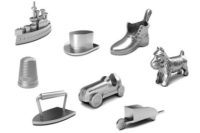Remember 1992? Four Los Angeles police officers were acquitted of beating Rodney King, sparking riots citywide. Compact discs surpassed cassette tapes as the preferred medium for recorded music. The national debt was “only” $4 trillion. And presidential candidate Ross Perot predicted the North American Free Trade Agreement (NAFTA) would produce “a giant sucking sound,” enabling Mexico to take thousands of U.S. manufacturing jobs south of the border.
In the end, Perot lost the election. NAFTA took effect Jan. 1, 1994, transforming the United States, Canada and Mexico into a single market largely free of tariffs and other obstacles to the sale of goods from one country to the other. Twenty years later, most economists believe the agreement has worked out pretty well.
According to the U.S. Chamber of Commerce, trade with Canada and Mexico has risen three-and-one-half fold to $1.2 trillion since 1994. U.S. agricultural exports to Canada and Mexico have tripled and quintupled, respectively. One in every 10 acres on American farms is planted to feed Canadians and Mexicans. U.S. services exports to Canada and Mexico have tripled, rising from $27 billion in 1993 to $82 billion in 2011.
A new report from the Manufacturers Alliance for Productivity and Innovation (MAPI)—NAFTA: A 50-Year Success Story for U.S. Manufacturing—concludes that free trade between the three countries has had substantial benefits for U.S. manufacturing.
MAPI senior advisor Ernest H. Preeg, Ph.D., points out several key statistics:
U.S.-NAFTA exports of manufactured goods grew by 52 percent from 2009 to 2013, compared with 34 percent to the rest of the world. In 2013, U.S. exports of manufactured goods to NAFTA partners accounted for 35 percent of all U.S. exports.
U.S.-manufactured exports to Canada and Mexico totaled $407 billion in 2013—more than five times as large as our $76 billion in exports to China.
Seventy-seven percent of U.S.-NAFTA merchandise exports in 2013 were manufactured goods, and almost half our services exports were business services tied to manufacturing.
In 2013, the United States enjoyed a $23 billion trade surplus in manufactured goods with Mexico and Canada. That contrasts sharply with our $524 billion trade deficit with the rest of the world, including $351 billion with China.
There’s no denying that America has lost thousands of manufacturing jobs in the past 20 years, but it has mostly lost them to China, not Mexico. It’s also important to note that technology has made U.S. manufacturers much more efficient. U.S. manufacturing output has increased by 55 percent from 1991 through 2011—even though fewer people are employed in the sector.
We urge the United States to build on the success of NAFTA and continue to pursue free and fair trade agreements. Unfettered access to rapidly growing markets abroad will help keep U.S. factories running.




